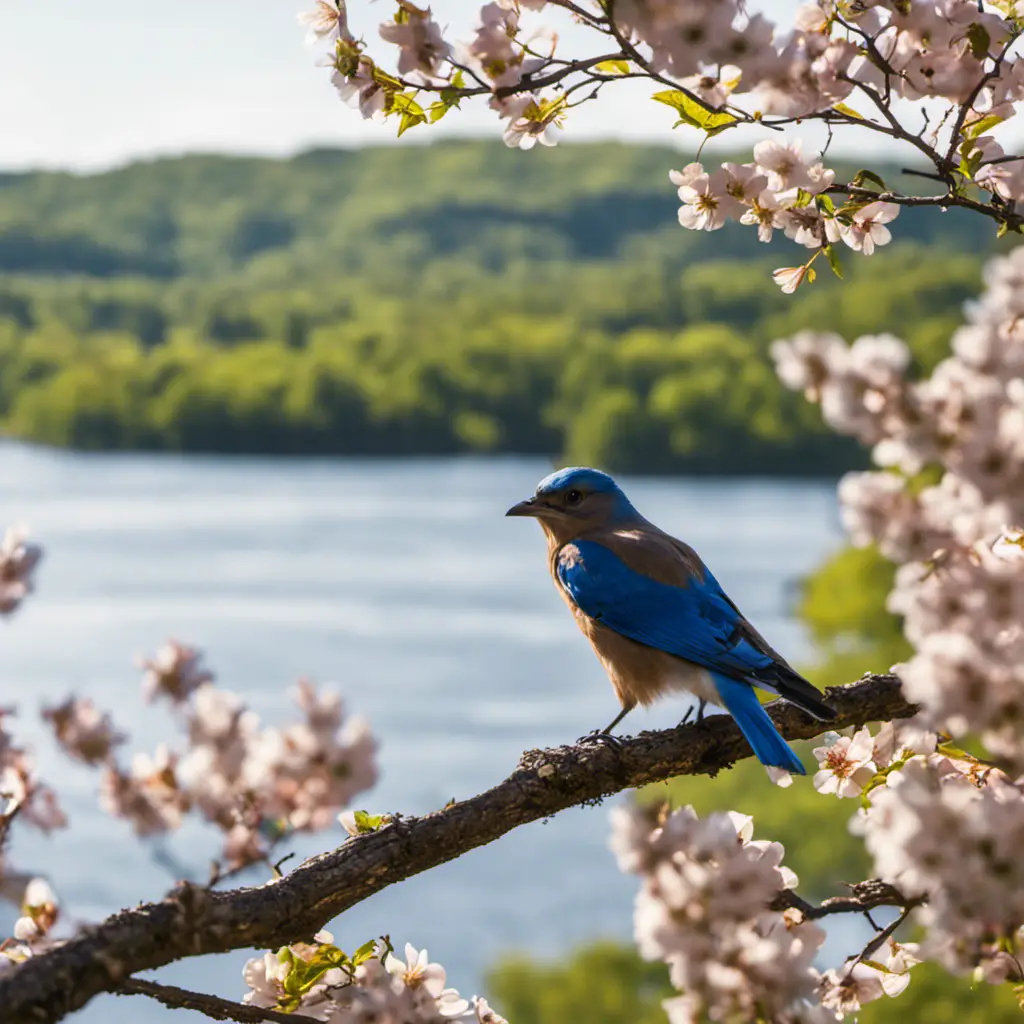Did you know that there are over 250 different types of birds that can be found in Tennessee? It’s true! In this blog post, we will take a look at the 10 most common birds in the state. We will discuss their habits and where you are likely to find them. If you’re interested in learning more about Tennessee’s birdlife, then this is the blog post for you!
Common Backyard Birds in Tennessee:
American Crow
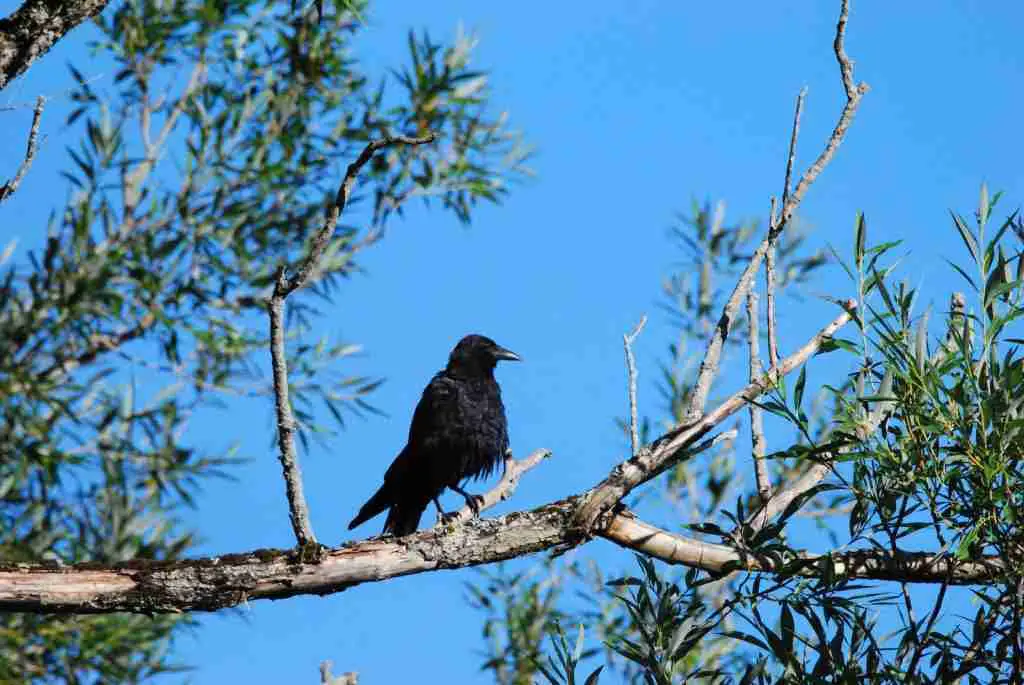
American Crows are large birds with wingspan of up to six feet. They have a black body with white stripes on their wings.
Their diet consists of fish, insects, and small mammals. They live in forests near bodies of water such as lakes and rivers. American Crows are shy birds that are not often seen by people.
American Crows are the largest bird in Tennessee.

Downy Woodpecker
(Picoides pubescens)
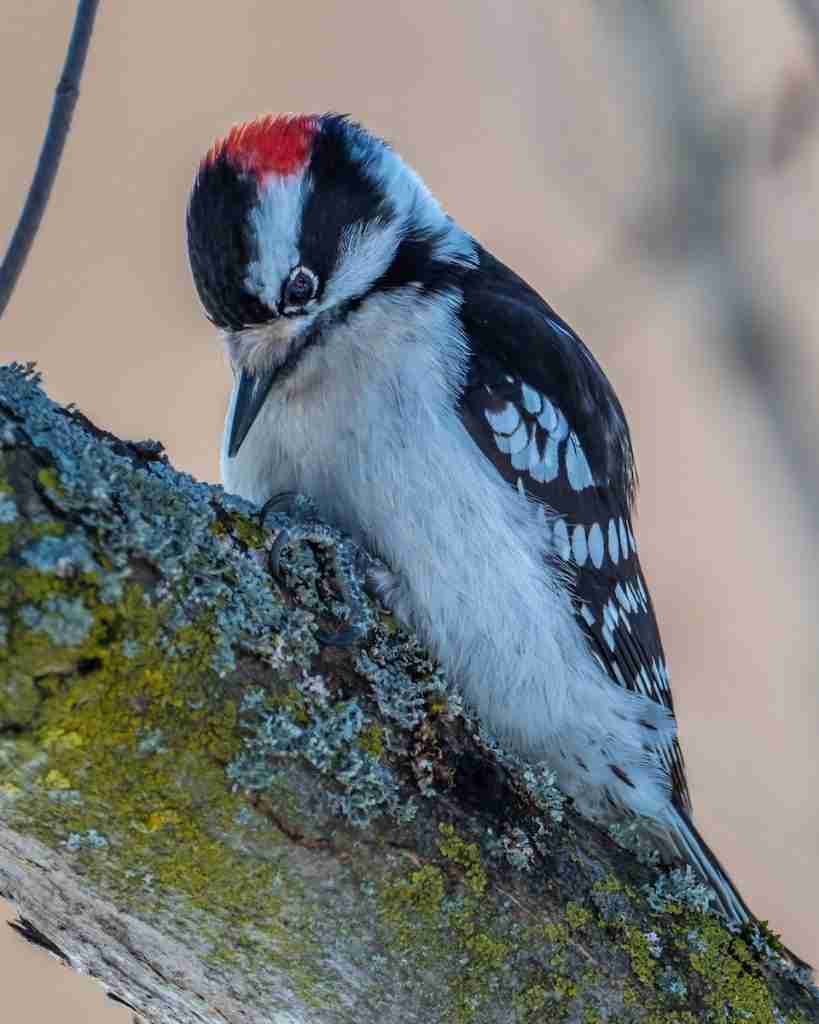
The Downy Woodpecker is the smallest woodpecker in North America, measuring just six to seven inches in length. The male has a red patch on the back of his head, while the female does not. These birds are black and white with small bills and pointed wings. Their diet consists mainly of insects, which they find by drilling holes into tree bark.
Downy Woodpeckers live in forests throughout North America. They are most common in the eastern United States, but can also be found in the western mountains and as far north as Alaska. These birds are year-round residents of their habitats, meaning they do not migrate.
Downy Woodpeckers are very active birds. They are often seen hopping around on tree branches in search of food. When they are not eating, they can be found perched atop a branch or flying from one tree to another. Despite their small size, Downy Woodpeckers are excellent climbers and can even hang upside down from a branch!

Song Sparrow
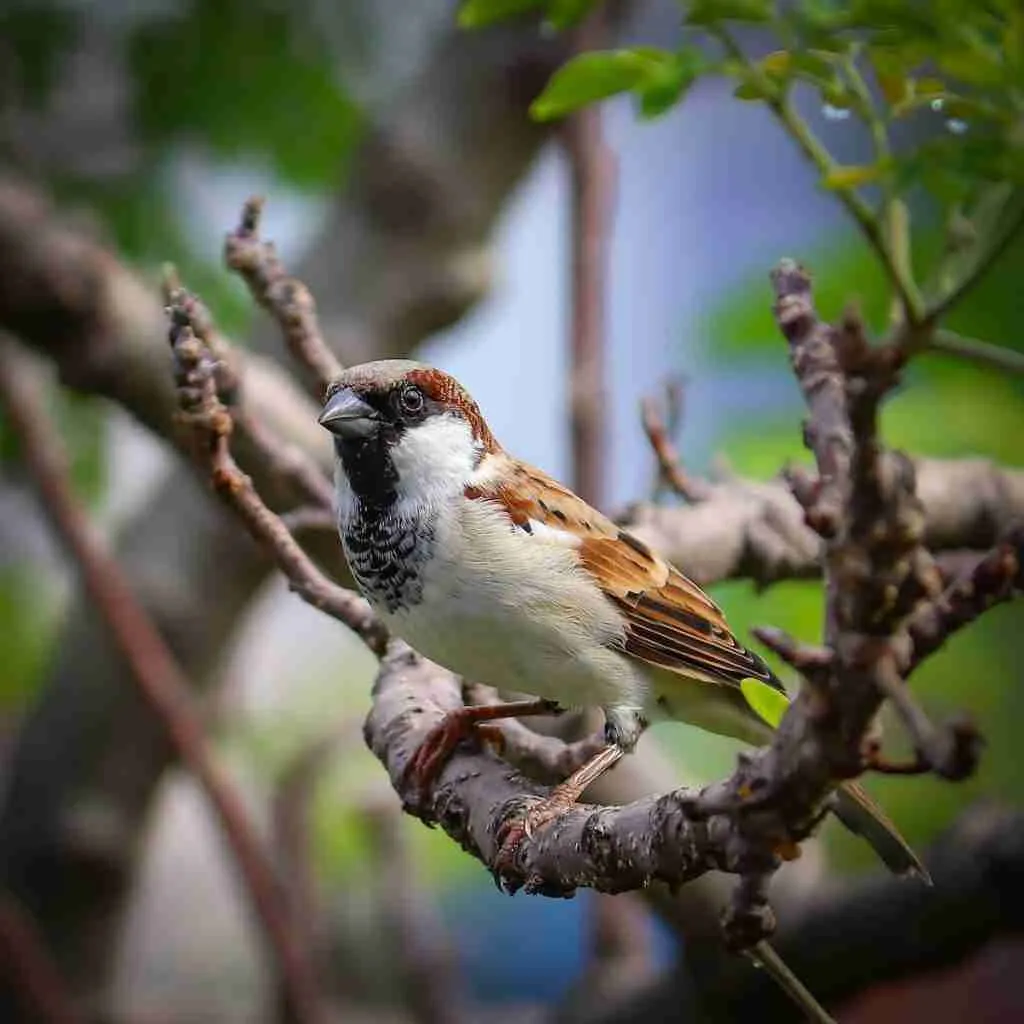
Song Sparrows are one of the most abundant and widespread sparrows in North America. They’re small birds with brown upperparts, streaked grayish-brown underparts, and a long tail. The breast is marked with a central spot. The face has a dark brown stripe through the eye and a paler stripe below.
These sparrows live in a variety of habitats, including forests, fields, brushy areas, and even urban parks. They typically eat insects and seeds.
Song Sparrows are small birds, measuring only about five to six inches in length. They have a wingspan of eight to nine inches. These sparrows are brown above and streaked grayish-brown below. They have a long tail and a dark brown stripe through the eye. The breast is marked with a central spot.

American Goldfinch
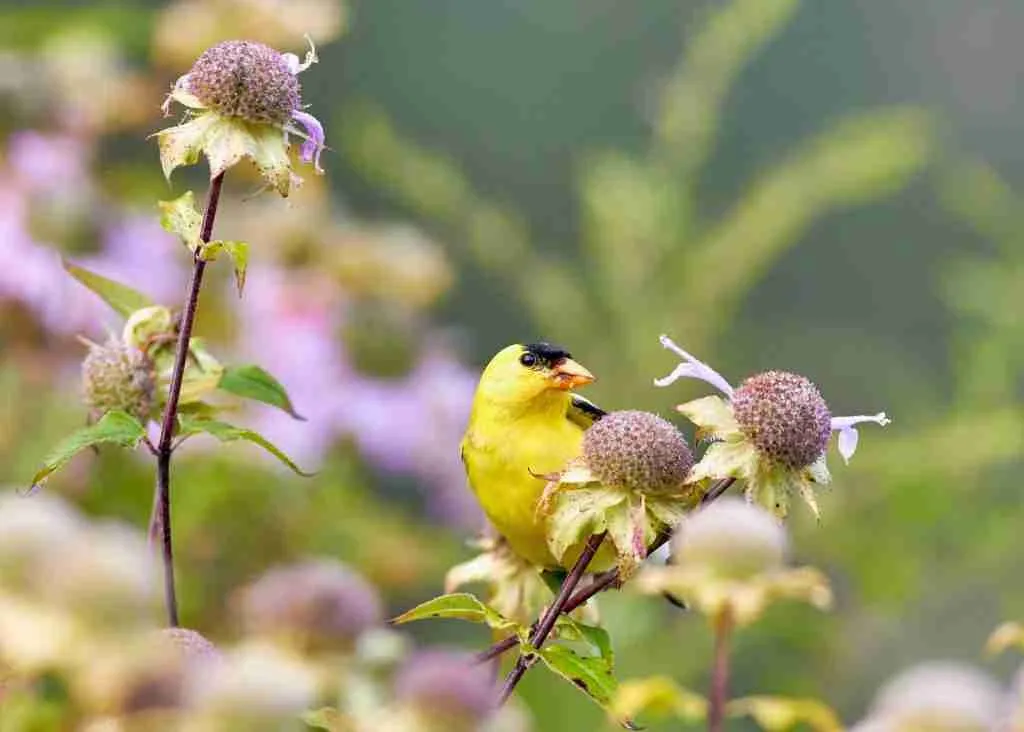
The American goldfinch, also known as the eastern goldfinch or simply the goldfinch, is a small North American bird in the finch family. It is migratory, ranging from mid-Alberta to North Carolina during the breeding season, and from just south of the Canadian border to Florida during the winter.
Male and female goldfinches are very similar in appearance, with a small, conical bill; black forehead and cap; yellow underparts; white wings with conspicuous black bars; and a long, notched tail. The American goldfinch is one of only two North American members of the genus Carduelis, the other being the Lesser Goldfinch.
The goldfinch is a seed-eating specialist with a diet that includes thistle seeds, teasel heads, and various other small fruits. This little bird is often found in weedy fields and along roadsides. It can be seen flitting about in search of food, often hanging upside down to reach its preferred seeds.
American goldfinches are social birds and often flock together. They are also known to be fairly tame, making them popular backyard visitors. These cheerful little finches are a welcome sight at any time of year.

European Starling – Sturnus vulgaris
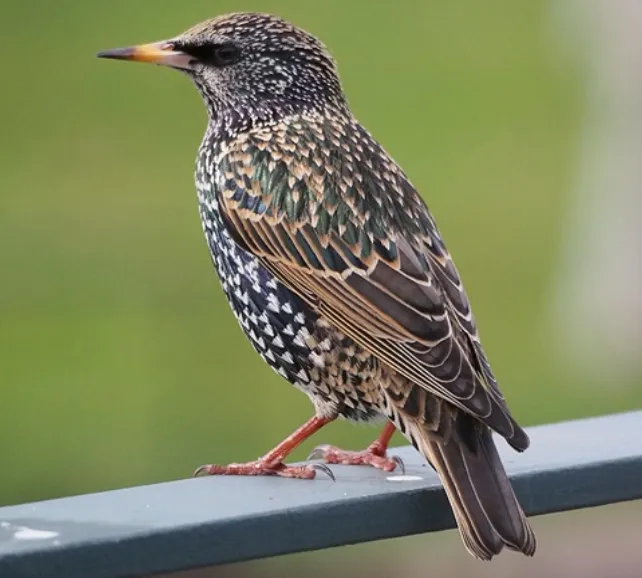
The European Starling is a small to medium-sized bird that is about 20 cm in length. The plumage is black with white spots and the bill is yellow. The legs are pinkish-red.
The diet of the European Starling consists of insects, earthworms, berries, and fruits. They forage on the ground or in trees and shrubs.
The European Starling is found in open habitats such as farmland, parks, and gardens. They are also found in urban areas.
The European Starling is a gregarious bird that forms large flocks. They are often seen roosting together in trees or on buildings. During the breeding season, they are territorial and will defend their nesting sites from other birds.

Orchard Oriole – Icterus spurius
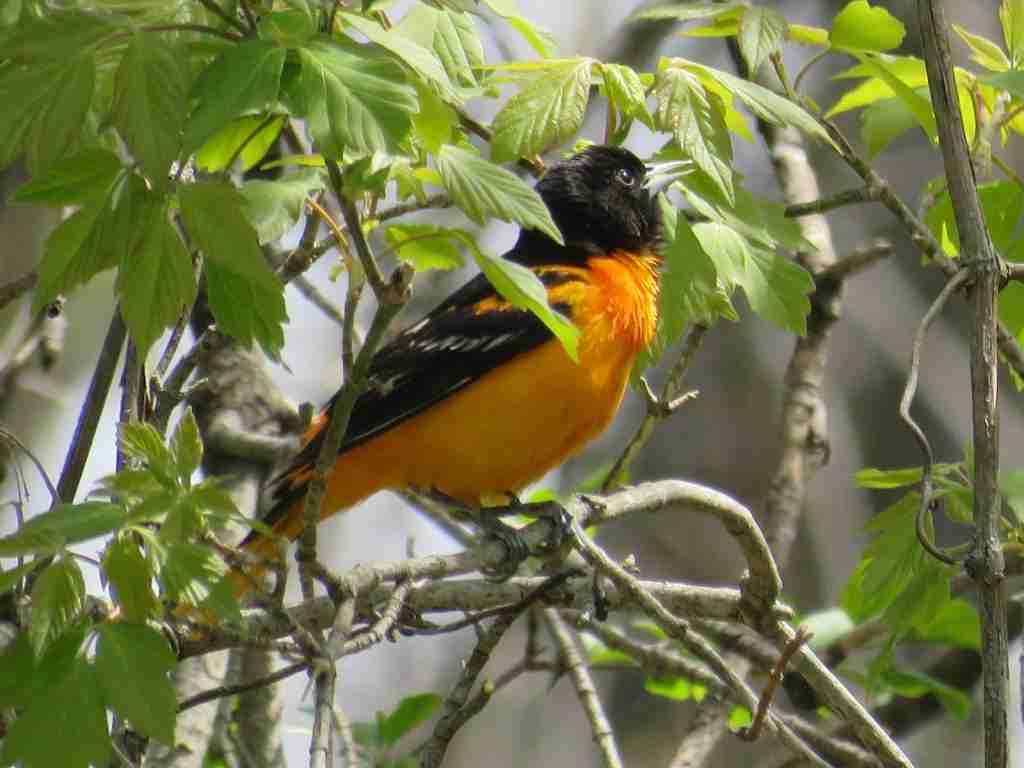
The Orchard Oriole is a small songbird with a body length of about five to six inches. Its back and wings are black, while its belly and breast are orange-yellow.
The males and females look alike, although the female may have duller colors. This bird is found in open woodlands and orchards near streams, and is a common breeder in Tennessee.
The Orchard Oriole feeds on insects, berries, and nectar. It nests in trees, often near the edge of a forest, making a cup-shaped nest out of grasses, bark strips, and plant down.
This bird is mostly active during the day. At night, it roosts in trees, often close to the ground. It is not currently considered endangered.

Blue Grosbeak – Passerina caerulea

The blue grosbeak is a songbird of the New World, one of four species in the genus Passerina. It breeds from southeastern Canada to central Mexico.
The male has black wings and tail with large white wing patches, sky-blue body plumage, and black streaks on its back. Females are duller overall, with gray-brown upperparts and yellowish underparts.
The diet of the blue grosbeak consists primarily of insects, but also includes some seed.
The blue grosbeak is a medium-sized songbird, measuring about 20 cm (or eight inches) in length from beak to tail. Its habitat is open woodlands, scrublands, and agricultural areas.
The blue grosbeak is a non-migratory bird, meaning it does not travel long distances outside of its breeding range. However, some birds may move short distances to find more suitable habitat.
The blue grosbeak is a monogamous bird, meaning that it mates with only one partner at a time. Both parents help care for the young.

Barn Swallow
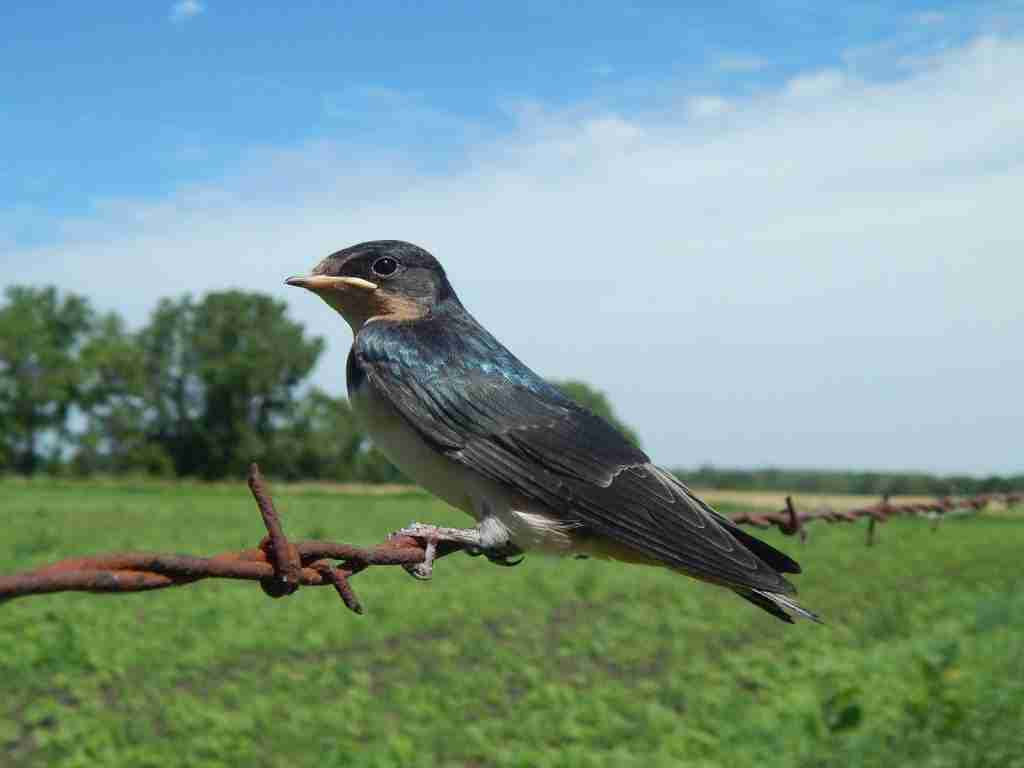
The Barn Swallow is a small songbird with long, pointed wings and a forked tail. It has a light-colored breast and belly with dark brown upperparts. The male has blue-black upperparts, while the female’s are browner.
This swallow is often seen flying low over fields or barnyard, catching insects in flight. It nests in cavities, often using old birdhouses or nest boxes. Barn Swallows are social birds and often nest in colonies.
The diet of the Barn Swallow consists mostly of insects, which it catches on the wing. Common prey items include beetles, wasps, flies, moths, grasshoppers, and dragonflies. It will also eat some berries and other fruits.
The Barn Swallow is a small bird, measuring only about 15 cm in length. Its wingspan is about 30 cm.
This swallow breeds in open areas across North America, Europe, and Asia. In North America, it is found east of the Rocky Mountains. The Barn Swallow typically nests in barns or other buildings, but will also use cliffs, trees, or caves.

Indigo Bunting – Passerina cyanea
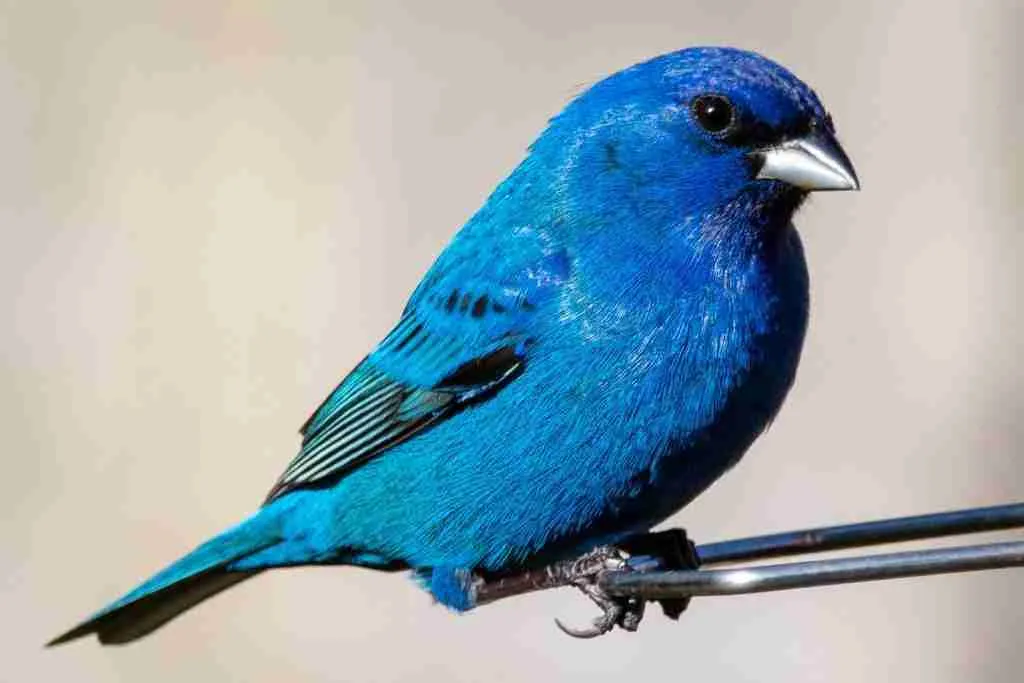
The Indigo Bunting is a small seed-eating bird in the family Cardinalidae. They are migratory birds that breed in North America and winter in Central America.
Buntings are sexually dimorphic, meaning males and females look different. The male has dark blue plumage with black wings and tail. The female is duller in color with brownish streaking.
These birds are found in open habitats such as forests, fields, and suburbs. They eat mostly insects but will also consume berries and other fruits.
The Indigo Bunting is a small bird, measuring only about five to six inches in length. They have a short tail and bill and long wings.
These birds are not shy and will often approach people. They are also known to be very vocal, singing a loud clear song made up of short phrases. The song is typically heard during the breeding season from May to July.

House Finches
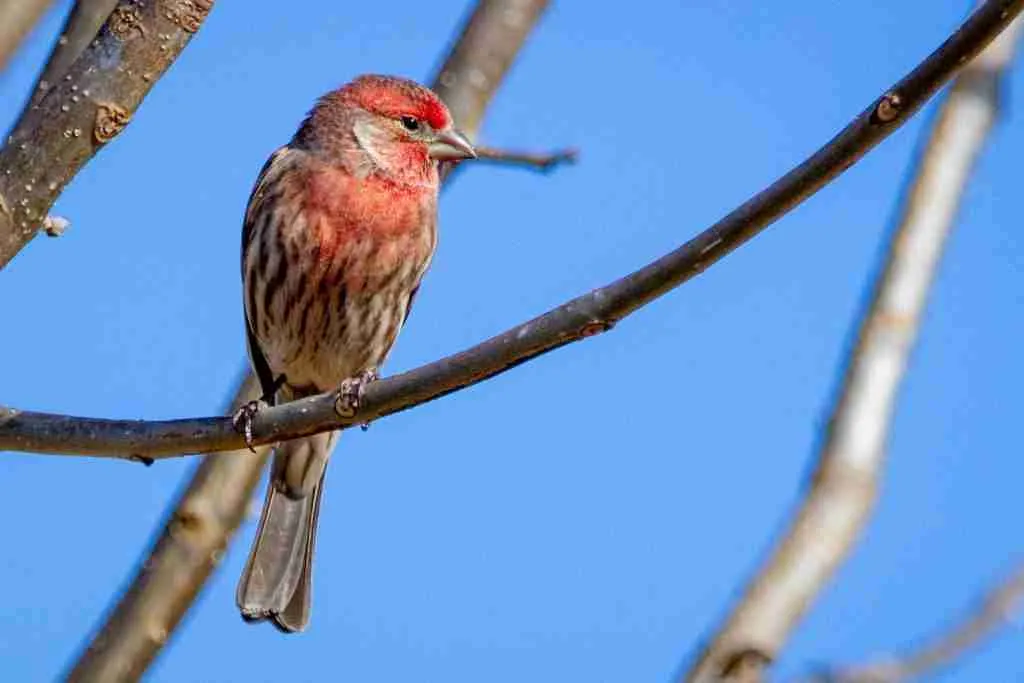
The house finch is a small bird, measuring about five to six inches in length. It has reddish brown plumage on its back and wings, with a paler belly. Its tail is forked, and its bill is thin and pointed. The male house finch has a reddish breast and head, while the female usually has a brownish or grayish breast.
The house finch is found in open woodlands, gardens, and urban areas across North America. It feeds on a variety of black oil sunflower seeds, fruits, and insects. The bird builds its nest out of twigs, grasses, and other materials, often using man-made structures such as window ledges and gutters.
The house finch is a social bird, often seen in flocks. It is not shy around humans, and will often approach people in search of food. The bird is also known to sing a variety of melodious songs.

House Sparrow
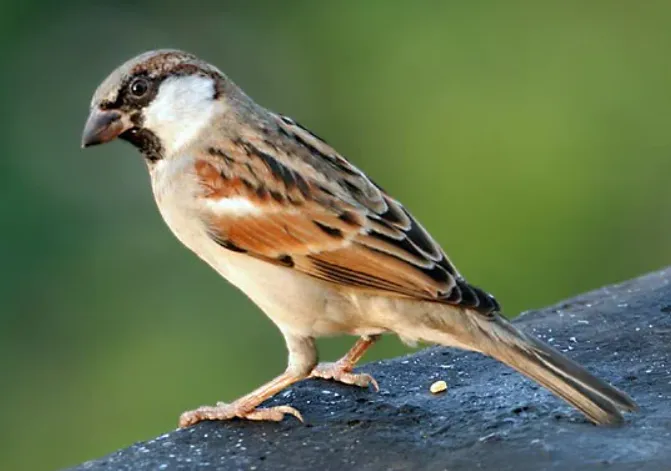
House Sparrows are small birds with brown upperparts and gray underparts. They have a black stripe on their throats and a white strip above their eyes.
Their bills are short and thick, and they have two black bars on their wings. House Sparrows eat mainly black oil sunflower seeds, but they will also eat insects. They usually nest in trees, but they will also nest in man-made structures.
House Sparrows are found in open habitats, such as fields and gardens. They are not shy around humans and will often build their nests near human dwellings. House Sparrows are not protected by the Migratory Bird Treaty Act.

Dark-eyed Junco – Junco hyemalis
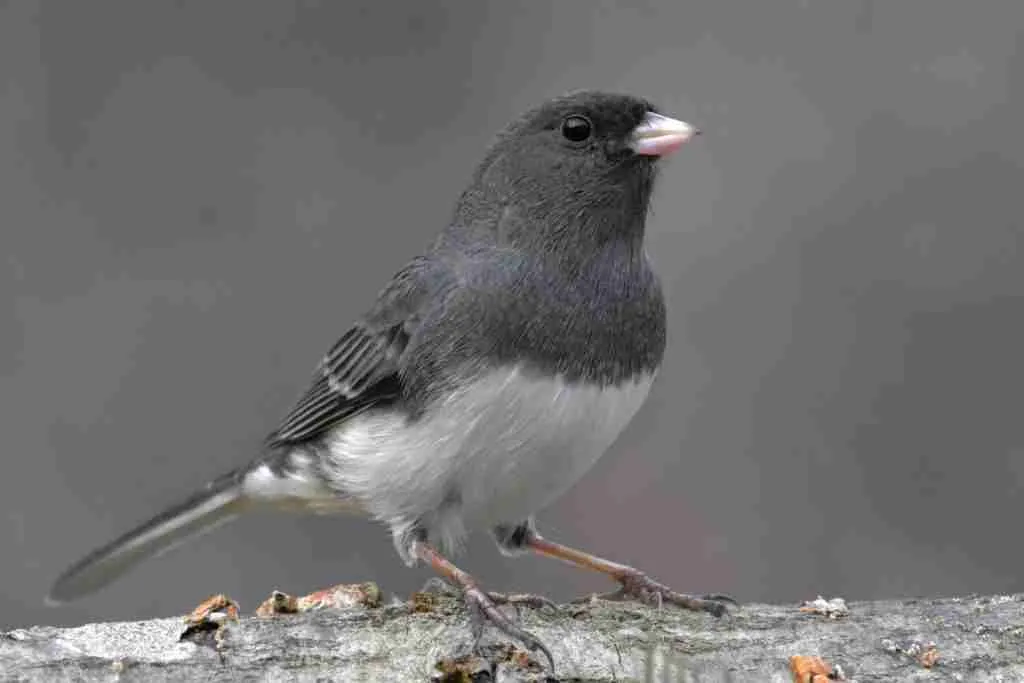
The Dark-eyed Junco is a small songbird with a plump body and short tail. It has a gray back, white belly, and dark blue gray head with a white throat. The male junco often has a black hood, while the female usually has a gray hood. These birds are between five and seven inches long and weigh about an ounce.
The Dark-eyed Junco is found in forests and woodlands across North America. In the winter, they move to lower elevations and can be found in parks and residential areas. Their diet consists of insects, seeds, and berries.
These birds are social creatures and often travel in flocks. They are not shy around humans and will often come close to people in search of food. Dark-eyed Juncos are not known to be aggressive but will defend their territory from other birds.
These birds mate for life and usually have two to six chicks per brood. The female junco builds the nest, which is a cup made of grass, bark, and leaves, and is usually hidden in a bush or tree.

Hermit Thrush – Catharus guttatus

The hermit thrush is a small songbird with a brown back and rusty breast. Its throat and belly are white, and it has a black head with white eye stripes. This bird is about the size of a robin, measuring around nine inches in length.
The hermit thrush can be found in woodlands across North America. It is a shy bird that is often heard singing before it is seen. This bird’s diet consists of insects, berries, and other small fruits.
The hermit thrush is a solitary bird that does not form flocks. During the breeding season, pairs build nests in trees or on the ground. The female lays three to six eggs, which are incubated for about two weeks. Both parents help care for the young birds after they hatch.

Yellow-rumped Warbler – Setophaga coronata
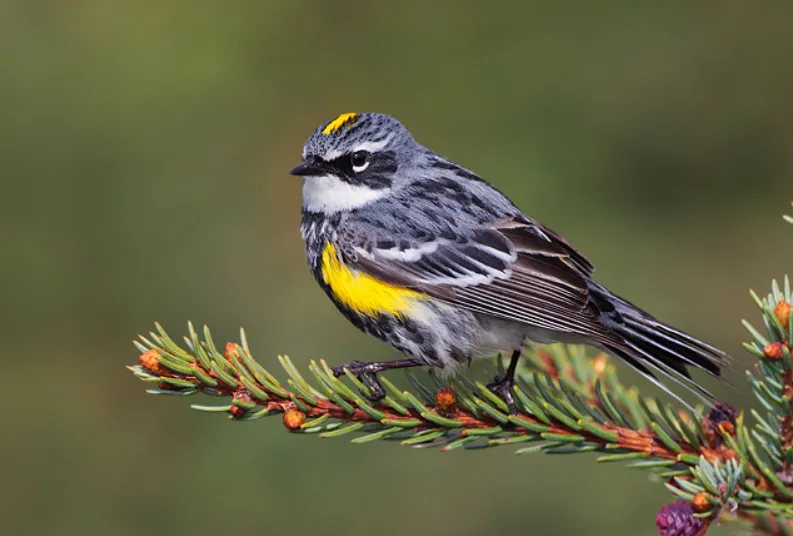
The Yellow-rumped Warbler is a small songbird with a black cap and yellow throat. It has a white belly with dark streaks on its sides. The back and wings are grayish-brown, and the tail is black with white edges. Males and females look alike.
These warblers breed in forests across North America. In the winter, they migrate to the southern United States and Mexico.
Yellow-rumped Warblers eat insects and spiders. They forage for food in trees, bushes, and on the ground.
These warblers are about five inches long with a wingspan of seven inches.
The Yellow-rumped Warbler is a common bird in Tennessee. It is found in woods and forests throughout the state. Look for these warblers near forest edges, in open woodlands, and in city parks. These birds are most active during the day.
The Yellow-rumped Warbler is a vocal bird. Its song sounds like “che-weeze, che-wee.”

Fox Sparrow – Passerella iliaca
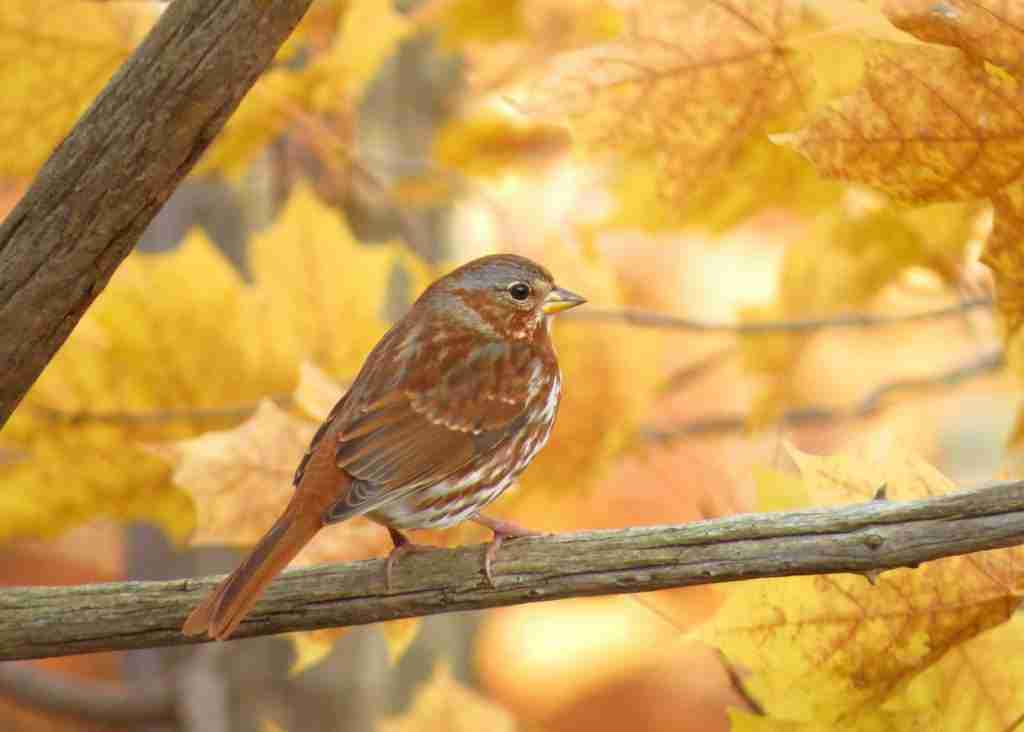
The Fox Sparrow is a large sparrow with a long, rounded tail. They have a rusty-brown back with dark streaks, and their belly is white with rust-brown streaks. Their head is grayish-brown with a rufous (reddish-brown) crown. Adult males and females look alike. Juvenile birds are browner overall with less distinct markings.
Fox Sparrows are found in forests and brushy areas across North America. In Tennessee, they are most common in the eastern part of the state.
These birds eat mostly insects and seeds. In the winter, they will also eat berries. You can attract them to your yard by putting out a bird feeder with sunflower seeds.
Fox Sparrows are shy birds that keep to themselves. They are often seen scratching in the leaves for food. During the breeding season, they will sing a loud, trilling song from a high perch.

Carolina Chickadee – Poecile carolinensis
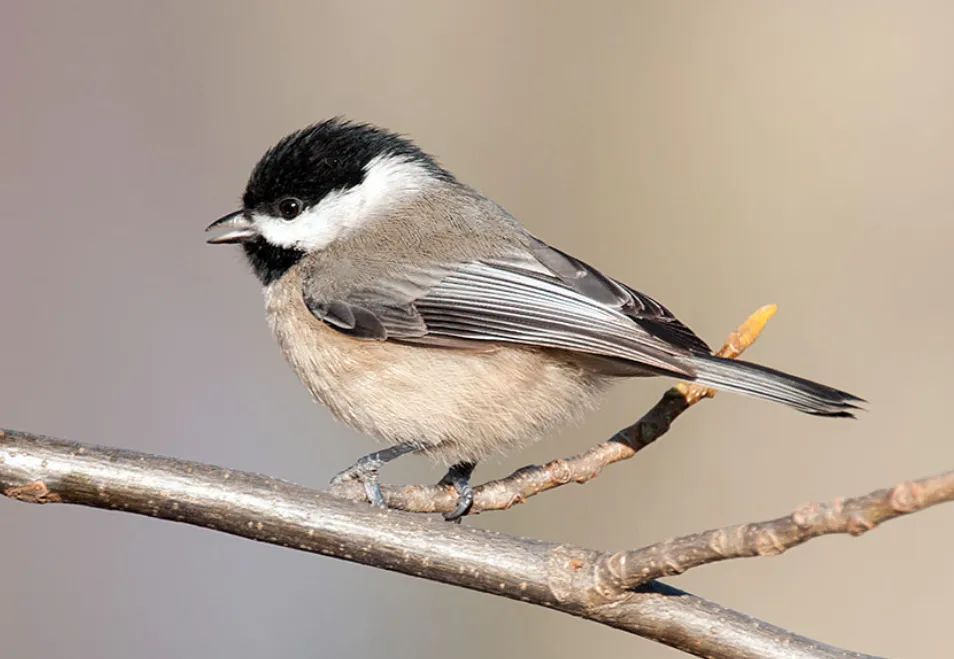
The Carolina Chickadee is a small, plump songbird with a black cap and bib. They have gray upperparts and whitish underparts with buffy sides. Their wings are dark with two white bars.
Adult males and females look similar. Juveniles have drabber colors and no cap. These birds are acrobatic and can hang upside down from branches. They often travel in pairs or small family groups.
This bird is common in woodlands, forests, parks, and yards across eastern North America. In the winter they will form small flocks with other chickadees, nuthatches, and titmice.
Carolina Chickadees are constantly on the move in search of food. Their diet consists of insects, spiders, and other small invertebrates which they find by probing into crevices with their long beaks. They will also eat some fruits and seeds.

Red-bellied Woodpecker – Melanerpes carolinus
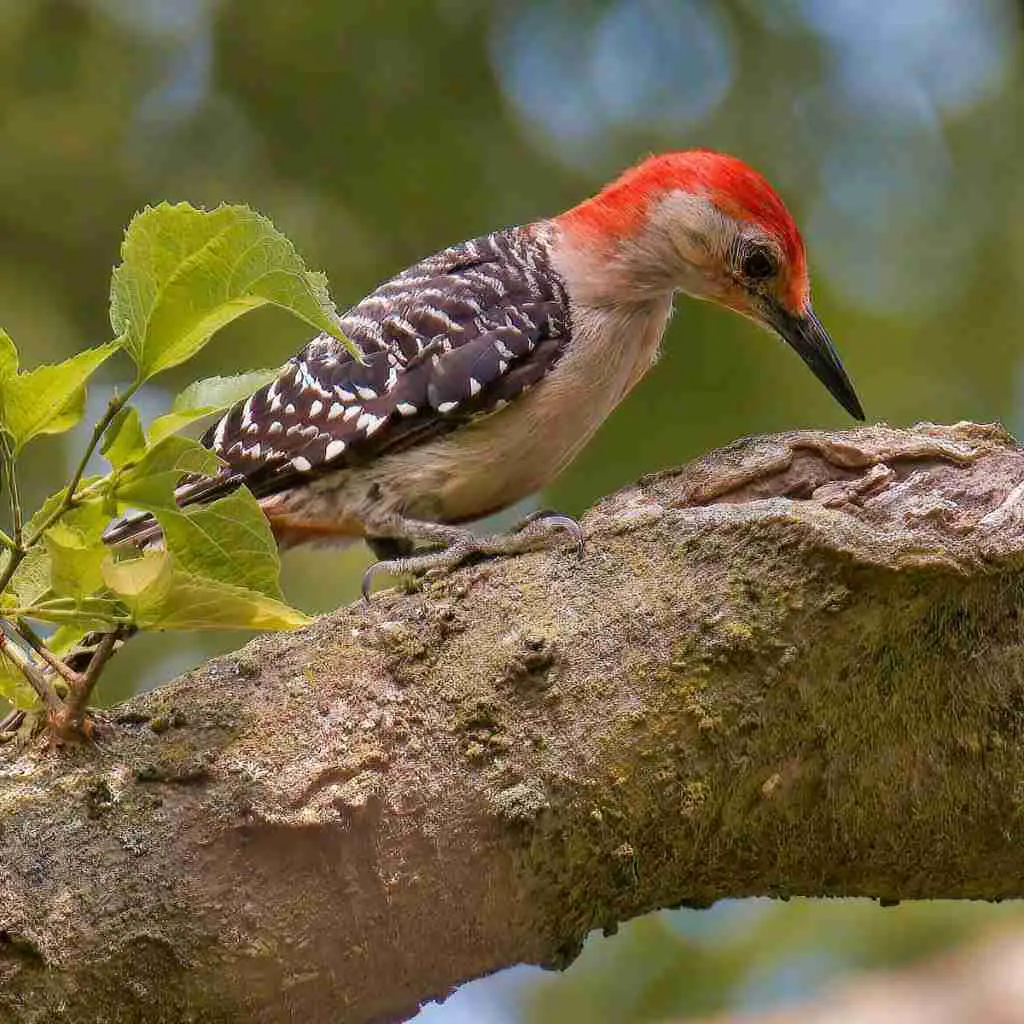
The Red-bellied Woodpecker is a medium-sized woodpecker with a light brown back, white underparts and a red cap. The adult male has a red streak running down the center of its belly, while the female usually has just a few red feathers on the lower belly.
These woodpeckers are found in deciduous forests of the eastern United States and southeastern Canada. They breed in woodlands, but will also nest in city parks and suburban backyards.
Woodpeckers are known for their drumming behavior, which they use to attract mates and to establish their territories. The Red-bellied Woodpecker will also use its beak to excavate nesting cavities in trees.
These birds eat insects, berries and nuts. You can attract them to your backyard by providing a birdfeeder with suet or sunflower seeds.

Eastern Bluebird – Sialia sialis
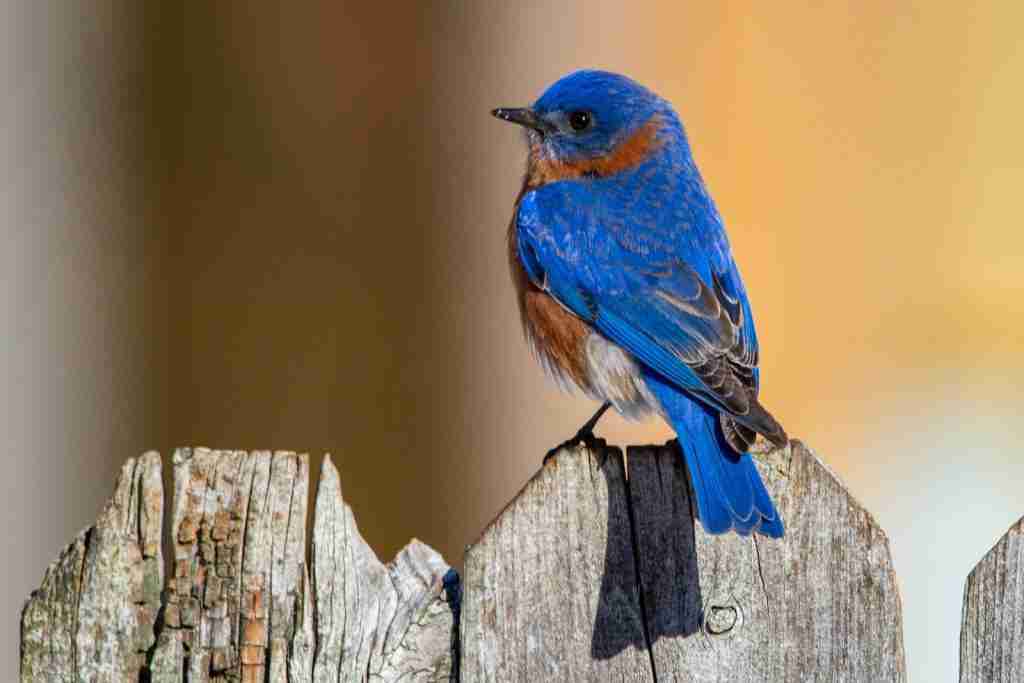
The Eastern Bluebird is a small thrush with blue upperparts and rusty-red undertail coverts. It has a white breast with dark streaks, and sometimes a faint rust-colored wash on its belly. Diet consists of insects and fruits.
These birds forage in open woods or fields, often perching on fence posts or low branches. They nest in tree cavities, often using old woodpecker holes.

American Robin – Turdus migratorius
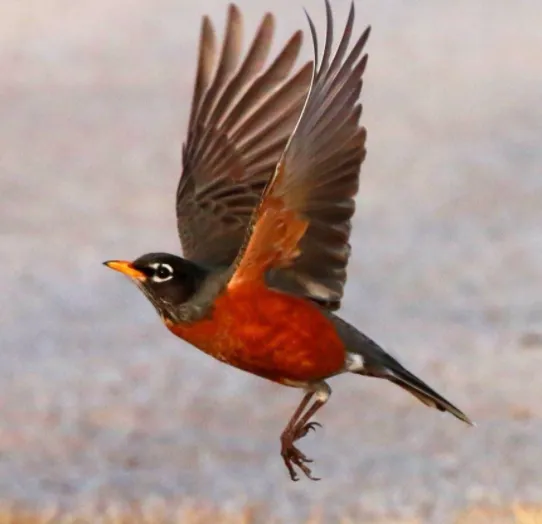
The American Robin is a common bird found across North America. Robins are easily identified by their bright red breast and face. These birds are fairly large, measuring about 16-20 cm in length with a wingspan of 30-40 cm.
Robins typically inhabit open woodlands, gardens, and parks. They forage on the ground for earthworms, insects, and other small prey. American Robins are also known to eat fruits and berries. In the winter, these birds will form flocks and can be seen in open fields or along roadsides.
Robins are generally active during the day and can often be heard singing their characteristic “cheer-up, cheer-up” song.
These birds are also known to make a “kuk-kuk-kuk” sound when alarmed. American Robins are monogamous and typically mate for life. Females will build a cup-shaped nest out of twigs, grass, and leaves.
The female will lay anywhere from three to five eggs which are pale blue with brown spots. Both parents will help care for the young until they are ready to fledge the nest, typically within three weeks.

Red-winged Blackbird
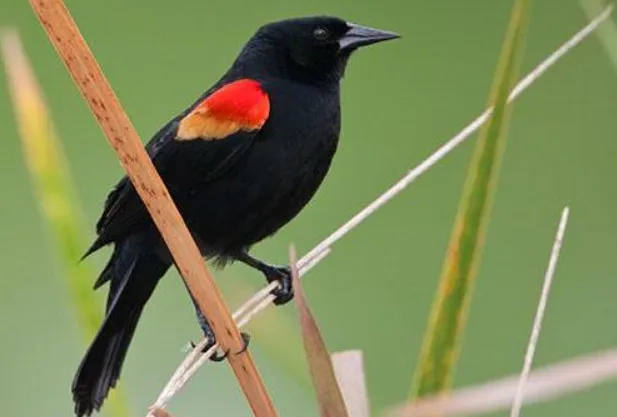
(Agelaius phoeniceus) is a species of true blackbird in the family Icteridae. The red-winged blackbird is sexually dimorphic; the male has shiny black feathers with a red shoulder, while females are dark brown.
Both sexes have yellow eyes and long legs. These birds can be found in woodlands, marshes, and fields near water. The red-winged blackbird is a seed eater, but will also consume insects.
These birds are sexually mature at one year old. males will often mate with several females, and the female will build a nest out of twigs and grasses lined with hair or feathers.
The female will lay anywhere from two to seven eggs, which will hatch in about two weeks. The young birds are able to fly after another two weeks.

Common Grackle
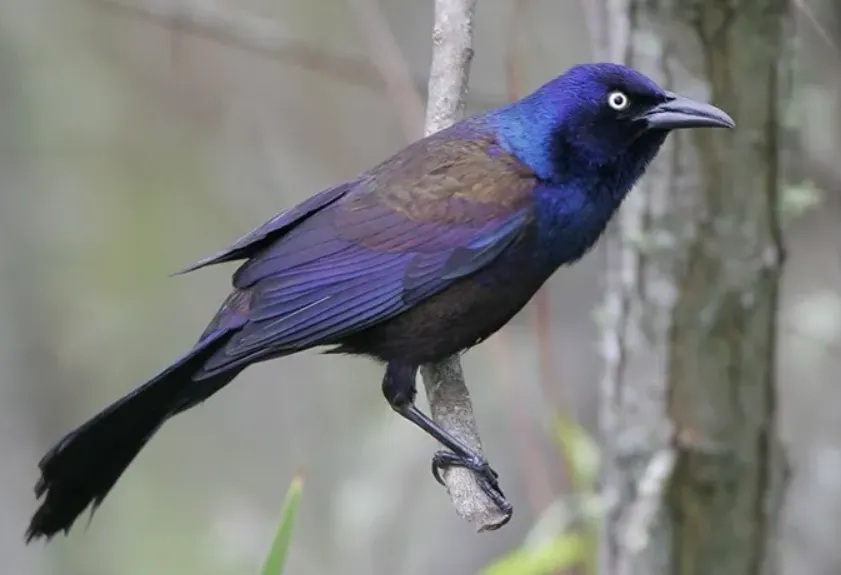
The Common Grackle is a large, blackbird with a long, keel-shaped tail. The male has a glossy purple-black body and head. The female is dark brown with a paler throat and breast.
Both sexes have yellow eyes. Immature birds are similar to adults but duller in color. This species can be found in a variety of habitats, including woodlands, wetlands, and urban areas.
Common Grackles feed on insects, earthworms, snails, and small rodents. They will also eat fruits and seeds. These birds are known to be aggressive and will often chase other birds away from feeding areas. Common Grackles are found throughout North America.
In Tennessee, they can be seen year-round. These birds are known to be loud and noisy, often making a variety of sounds.

Northern Cardinals
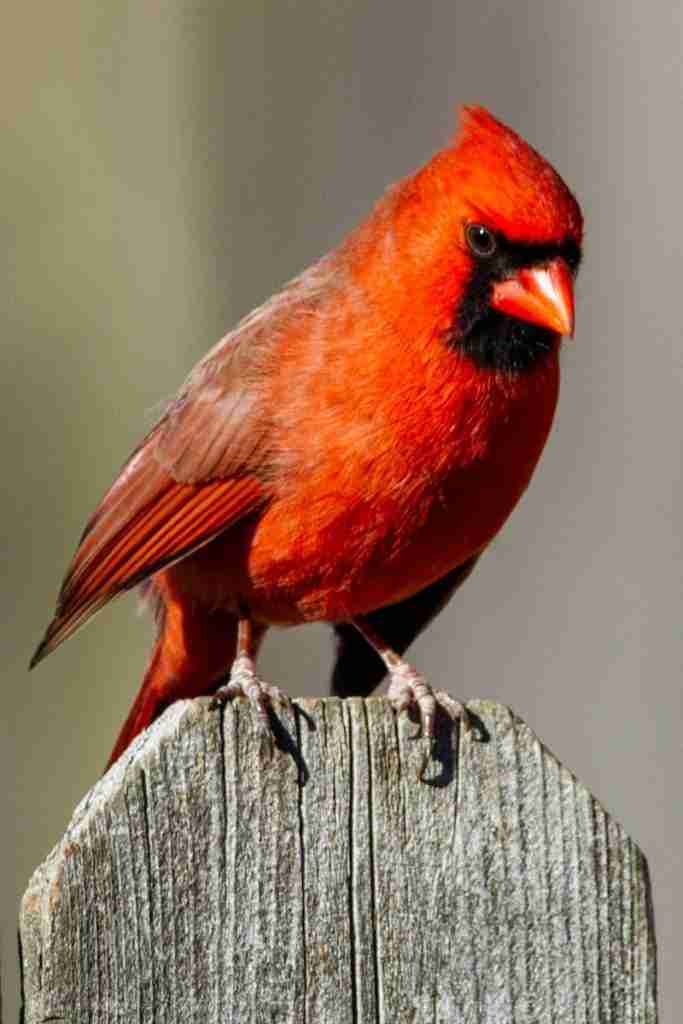
Cardinals are fairly easy to identify. They are bright red with a black mask around their face. Cardinals also have a red crest on their head. Males and females look very similar, although the males tend to be slightly larger.
Cardinals eat mostly seeds and insects. In the winter, they will often eat berries as well. Cardinals are typically about nine inches long and weigh about two ounces.
Cardinals are found in woodlands, forests, and backyards across the United States. They are year-round residents of Tennessee. Cardinals do not migrate.
Cardinals are social birds and can often be seen in pairs or small groups. During the breeding season, however, males will establish territories and can become aggressive towards other males. Cardinals are monogamous and will mate for life.

Tufted Titmouse
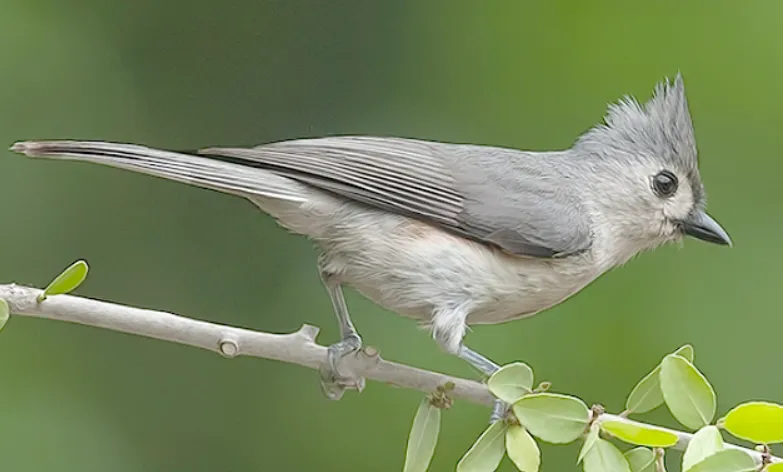
Tufted Titmouse is a small songbird with gray upperparts and whitish underparts. The head has a black cap, white eyebrows, and a small crest. It has black eyes, a small black bill, and long legs.
The Tufted Titmouse is found in woodlands throughout much of the eastern United States. It feeds on insects, spiders, and small fruits. The Tufted Titmouse nests in trees, often using old woodpecker holes.
The Tufted Titmouse is a relatively common bird that is not considered to be at risk of extinction. However, like many other species, it has declined in numbers in some areas due to habitat loss.

Carolina Wren
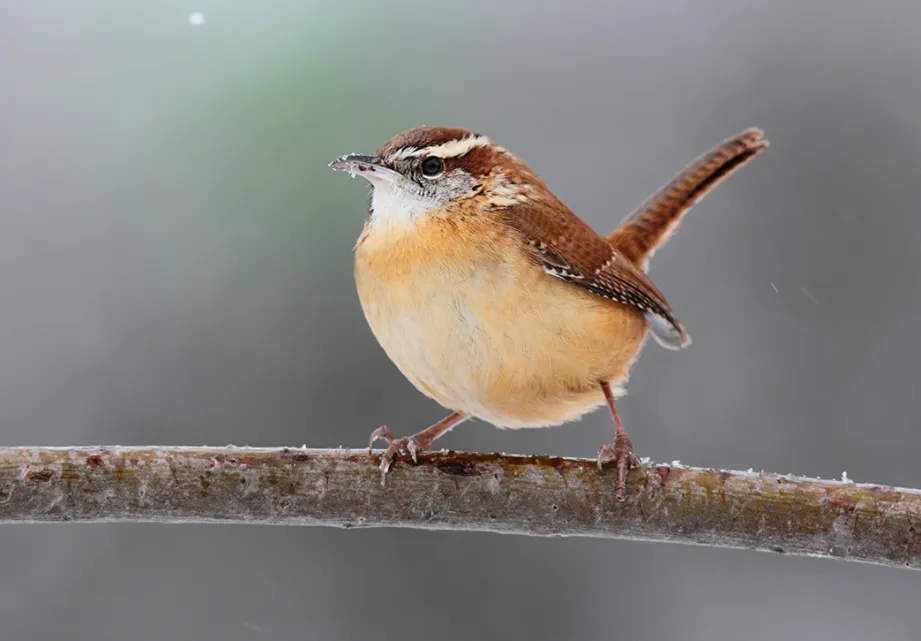
The Carolina wren is a small songbird with a long tail and brownish-orange plumage. It is found in the southeastern United States, from North Carolina to Texas. The bird’s diet consists mainly of insects, but it will also eat fruit and seeds.
The Carolina wren typically nests in trees or shrubs, although it will sometimes build its nest in an abandoned building or birdhouse.
The bird is known for its loud, cheerful song, which it often sings year-round. Carolina wrens are relatively common birds, and their populations are stable. However, the bird is sometimes killed by cats and other predators.

Carolina Chickadee

The Carolina chickadee is a small songbird with a black cap and bib, gray upperparts, and white underparts. They have a wingspan of about six inches and weigh less than half an ounce. Chickadees are found in woodlands, parks, and gardens throughout the eastern United States.
These little birds are acrobatic and can hang upside down from branches while they feed on insects, spiders, and other small invertebrates. They will also eat seeds and berries. Carolina chickadees are social birds and often form flocks with other small birds such as nuthatches and warblers.
During the breeding season, the male chickadee will try to impress potential mates by performing a courtship dance and giving a special “chick-a-dee” call. If the female is interested, she will respond with her own calls and the two birds will mate.
The female will build a nest of moss, leaves, and spider webs in a tree cavity or other protected area. She will lay four to eight eggs which the both parents will take turns incubating.

What is the most common bird in Tennessee?
The most common bird in Tennessee is the American Robin. The American Robin is a migratory songbird that can be found in woodlands, gardens, and parks across North America. In Tennessee, the American Robin is most commonly seen in the spring and summer months.
What is the rarest bird in Tennessee?
There are many different types of birds in Tennessee, but the rarest bird is probably the ivory-billed woodpecker.
What birds are migrating through Tennessee right now?
Birds are migrating south for the winter, and many of them will pass through Tennessee. Some of the most common birds that migrate through the state are warblers, sparrows, and finches.
Are there Cardinal birds in Tennessee?
There are no cardinal birds in Tennessee. Cardinals are found in the eastern United States, central Mexico, and parts of Canada. Cardinals typically live in wooded areas near forests. In Tennessee, there are many different types of birds, but cardinals are not one of them.
Are there finches in Tennessee?
There are no finches in Tennessee. The state is home to many different kinds of birds, but not finches. If you’re looking to see some finches, you’ll have to travel to a different state.
What kind of black birds are in Tennessee?
The most common black bird in Tennessee is the crow. Other black birds include the raven, blackbird, and grackle. Crows are interesting creatures and are known for their intelligence.
Bird Feeders
There are many different types of bird feeders that you can purchase or even make yourself. The most important thing to consider when choosing a bird feeder is what type of birds you want to attract. Different birds prefer different types of food, so it is important to choose a feeder and seed that will appeal to the kinds of birds you want to see in your backyard.
Hummingbird feeders are designed to attract hummingbirds. They are typically red or pink and have little holes in the bottom that the birds can drink from. Hummingbirds are attracted to sweet nectar, so it is important to choose a bird feeder that has nectar or sugar water in it.













An avid ornithologist, zoologist and biologist with an unwavering passion for birds and wild animals.
Dr. Wilson’s journey in ornithology began in childhood and led him to obtain a Ph.D. in Ornithology from the prestigious Avian Research Institute. He has worked closely with renowned experts in the field and conducted extensive research and field studies globally.


